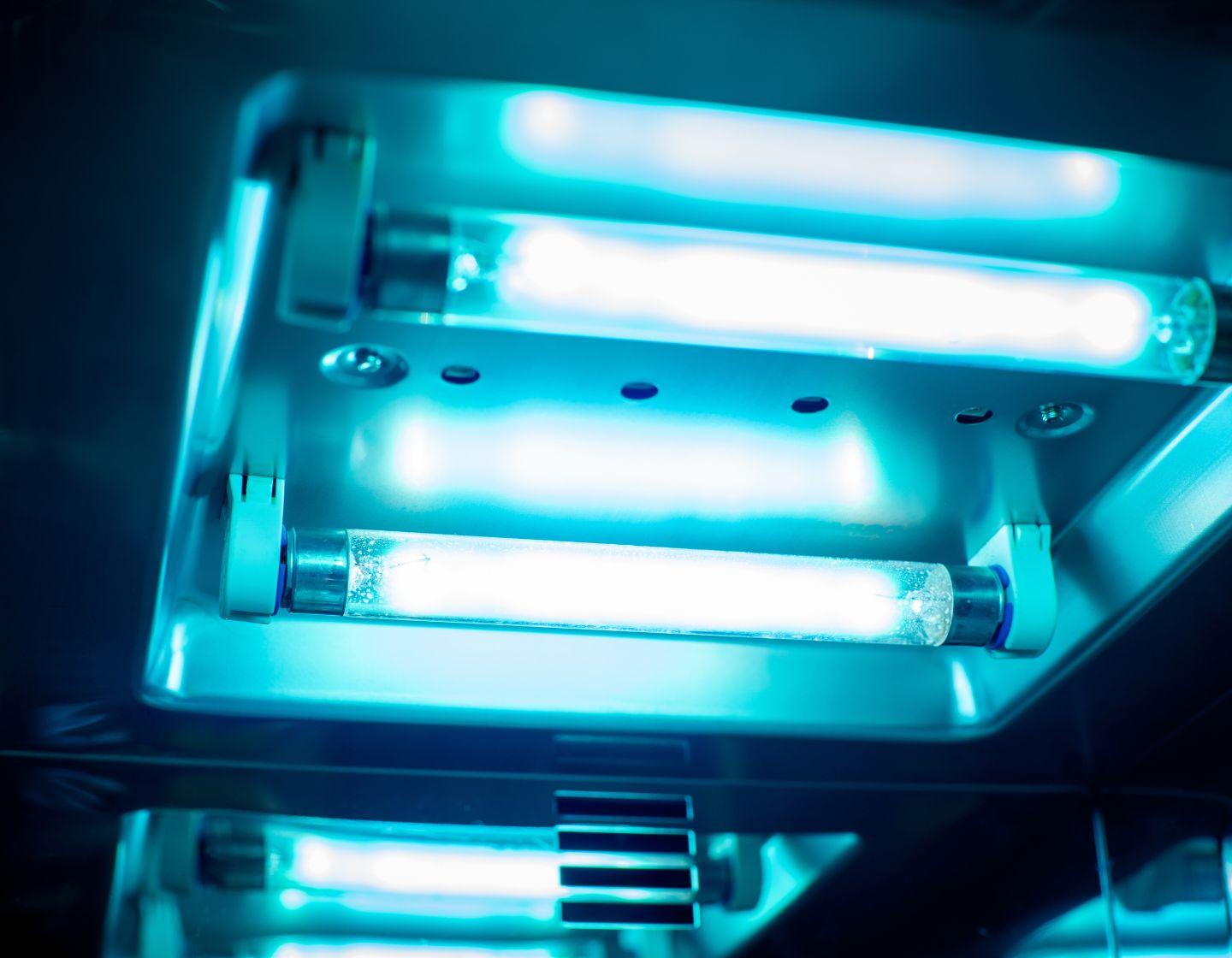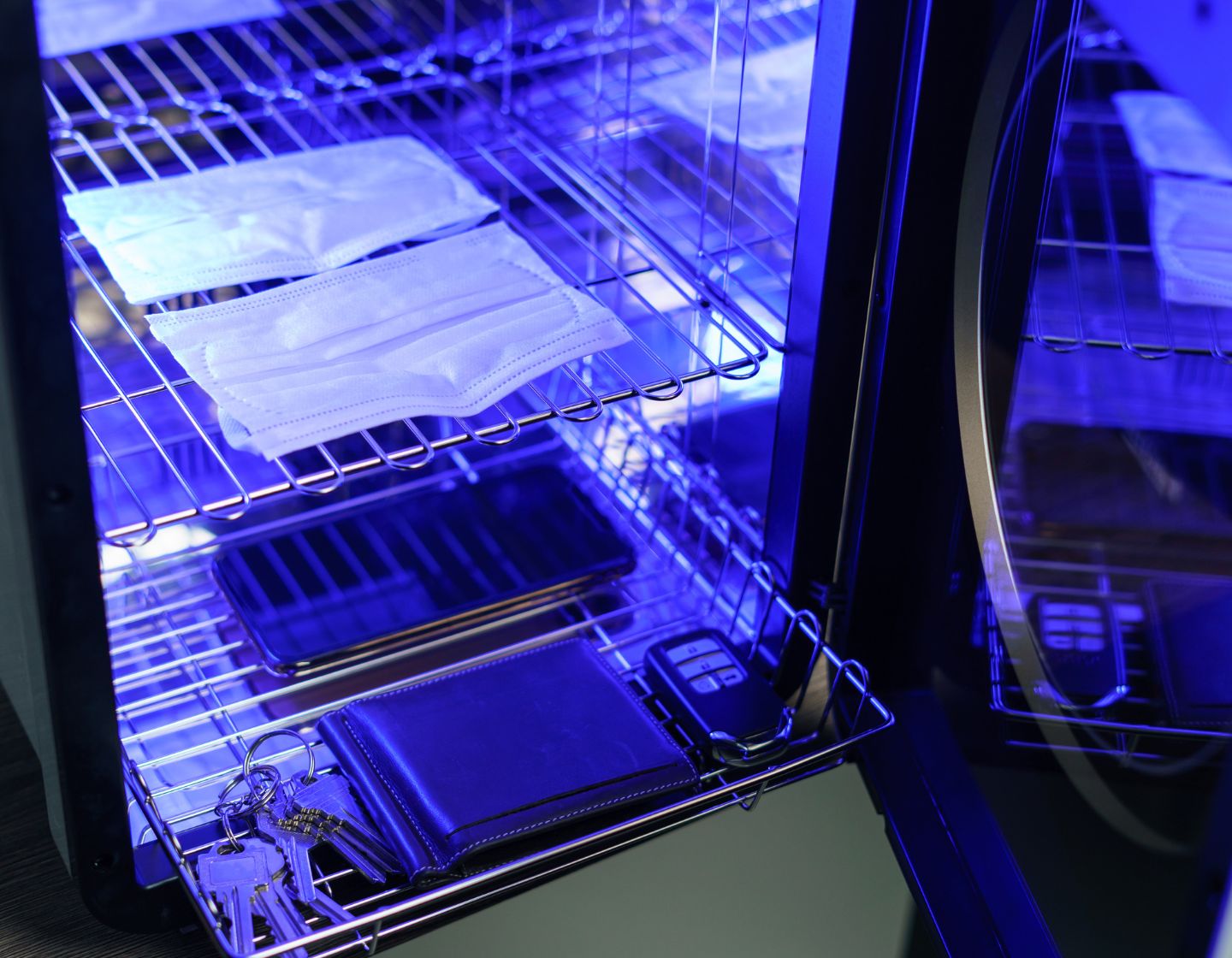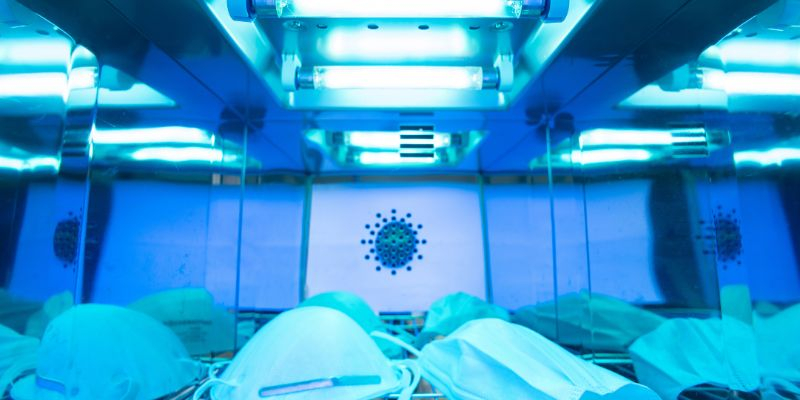What is UV-C LED?
UV-C LED technology is a highly effective means of disinfection and sterilisation, making it ideal for a range of uses and environments.
UV-C light has been used in laboratory and hospital environments for around 40 years to disinfect water, air and surfaces as well as pharmaceuticals. It’s now also being safely deployed in the home.
UV-C LED is a relatively new form – the technology uses light to damage the DNA of pathogens, and it provides more benefits when compared to conventional UV purification. Direct exposure to UV light ruptures the DNA or RNA of bacteria and viruses so they cannot multiply and cause an infection.
UV-C benefits:
- Micro-organisms destroyed in 2 seconds of exposure
- Kills up to 99.9% of bacteria and viruses
- Energy-efficient
- Compact formats
- Narrow spectrum of output, specific wavelength
- Low heat.
Technically, UV light provokes a reaction between 2 molecules of thymine, one of the DNA bases. Extensive damage means that the DNA sequence is altered so the pathogen cannot reproduce. Thymine is especially sensitive at wavelengths at or near 265 nm. Similar effects are found in RNA.

Viruses are not strictly speaking living organisms – they are proteins and genetic material that survive and replicate inside another life form, so cannot be killed – but UV-C light deactivates them. UV-C LEDs generally harness 260-280 nm wavelengths, which “switch off” pathogens like bacteria and viruses.
The efficiency of UV-C depends on the dosage which is, broadly speaking, the watts delivered by the LED source, distance from the target, and the duration of exposure.
Apart from healthcare, UV-C LED technology has been also deployed in a range of water-disinfection systems, including pumps for water processing, water supply for soda dispensers and even home kitchen taps.
Earlier forms of disinfection lighting include mercury-discharge lamps, which cannot be effectively used in some settings, and have the downside of longer lamp warm-up time compared with the near instant LED technology and repeated on-off cycles does not damage the components.

These conventional lamps also emit only part of the light spectrum in the UV-C range, with efficiency of less than 45% while LED technology provides controlled emission within the spectrum for greater efficiency and less power consumption.
The LED chip source is also compact and can be used in a wider range of formats and designs, with low operating voltage, suitable even for battery systems. And LED UV-C products are not hampered by problems related to the pollution, management and disposal of mercury.
We are all much more focused on making our environments safer and UV-C technology is a central player in the way we move to a cleaner, greener way of living.
Innovative lighting companies have designed a range of solutions that use UV-C light safely to improve daily life and can be used safely in the home, including sterilisation boxes for chemical-free disinfection, air purifiers and ceiling fan lights.

